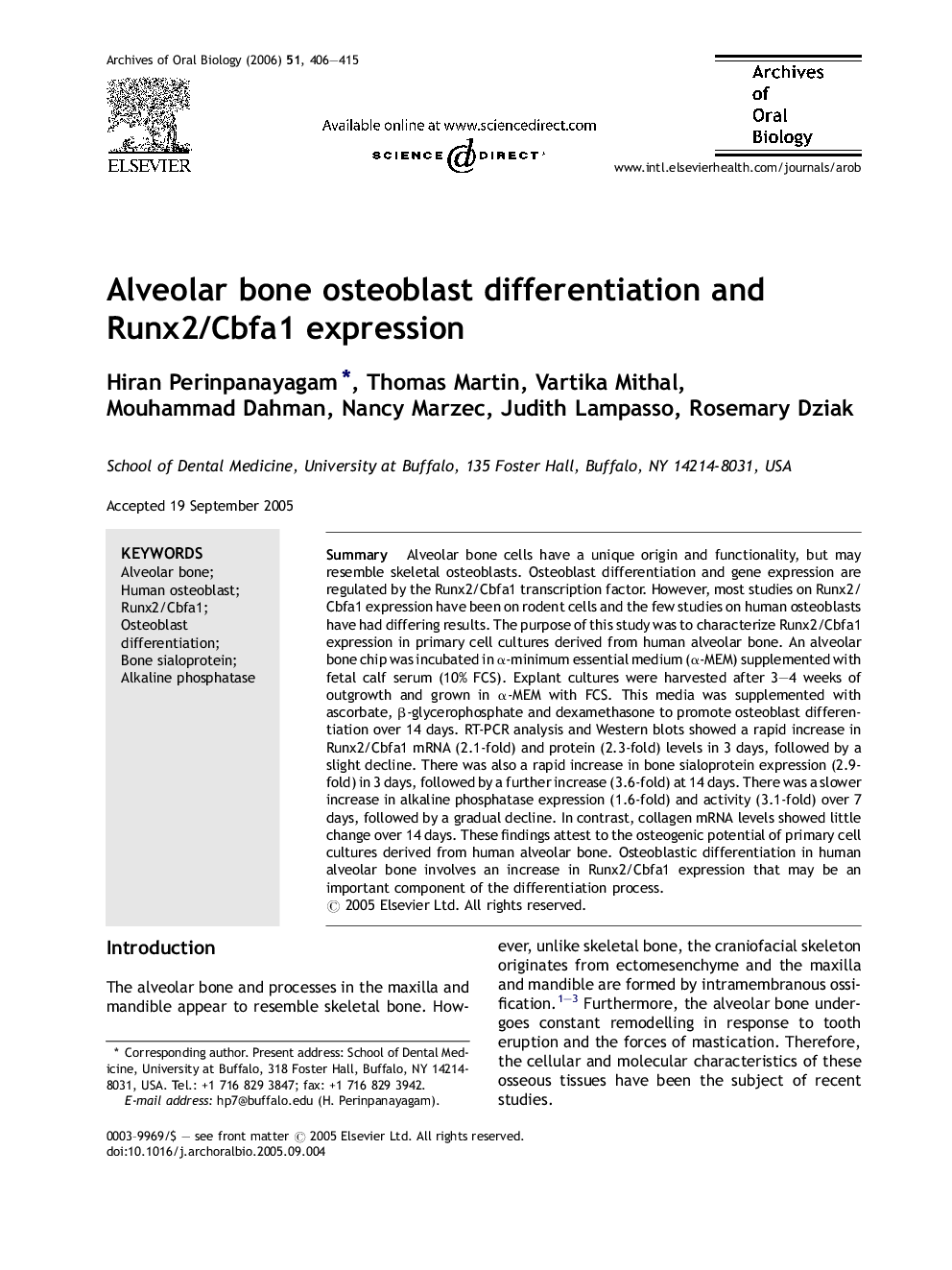| Article ID | Journal | Published Year | Pages | File Type |
|---|---|---|---|---|
| 3121646 | Archives of Oral Biology | 2006 | 10 Pages |
SummaryAlveolar bone cells have a unique origin and functionality, but may resemble skeletal osteoblasts. Osteoblast differentiation and gene expression are regulated by the Runx2/Cbfa1 transcription factor. However, most studies on Runx2/Cbfa1 expression have been on rodent cells and the few studies on human osteoblasts have had differing results. The purpose of this study was to characterize Runx2/Cbfa1 expression in primary cell cultures derived from human alveolar bone. An alveolar bone chip was incubated in α-minimum essential medium (α-MEM) supplemented with fetal calf serum (10% FCS). Explant cultures were harvested after 3–4 weeks of outgrowth and grown in α-MEM with FCS. This media was supplemented with ascorbate, β-glycerophosphate and dexamethasone to promote osteoblast differentiation over 14 days. RT-PCR analysis and Western blots showed a rapid increase in Runx2/Cbfa1 mRNA (2.1-fold) and protein (2.3-fold) levels in 3 days, followed by a slight decline. There was also a rapid increase in bone sialoprotein expression (2.9-fold) in 3 days, followed by a further increase (3.6-fold) at 14 days. There was a slower increase in alkaline phosphatase expression (1.6-fold) and activity (3.1-fold) over 7 days, followed by a gradual decline. In contrast, collagen mRNA levels showed little change over 14 days. These findings attest to the osteogenic potential of primary cell cultures derived from human alveolar bone. Osteoblastic differentiation in human alveolar bone involves an increase in Runx2/Cbfa1 expression that may be an important component of the differentiation process.
